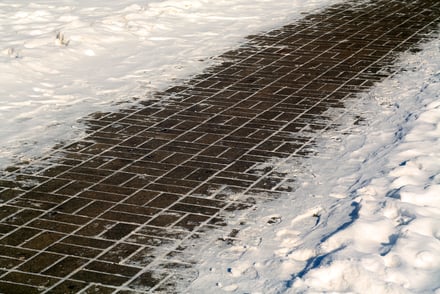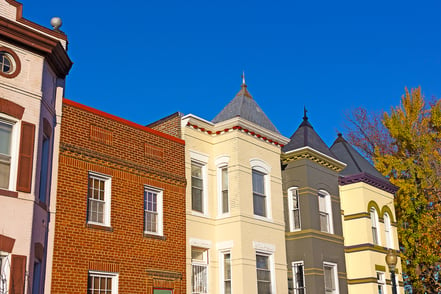When it comes to curb appeal, your front steps can make a huge impact. Signaling excellent craftsmanship, attention to detail, and a welcoming atmosphere, they add a special touch to your historic brick home. However, the beauty of your entryway isn’t the only consideration. Safety is an ongoing concern, especially in areas that experience severe winter weather, and particularly for those that have frequent visitors or aging family members. That said, safety and beauty don’t need to be mutually exclusive. With the right design, you can install a new handrail that will blend in beautifully and look like it has been there all along. Here’s what you should know if you’re in need of a handrail for the front steps of your historic brick home.
The Brick Must Be in Excellent Condition
Installing a handrail into crumbling steps won’t solve the problem and may even make the problem worse. Before a handrail is installed, have your front steps inspected by a historic brick expert. While some problems may be evident to you, other issues are things that only an expert can detect. By having a professional evaluation you prevent bigger problems down the road.
Not all steps require a complete replacement. It will depend on the extent of the damage and if it has compromised the internal structure. For example, a few loose bricks can be reset and tuckpointed while missing bricks can be replaced. This is an additional benefit of having a traditional masonry contractor on your side—they know how to source bricks that match and are period-appropriate for the time at which your historic home was first built.
It is important that any repairs, including replacing bricks on the front steps, are done with original materials and tuckpointing techniques. New brick-and-mortar formulations are not designed to work with the historic brick and will end up causing more damage in the long run.
Where to Install the Railing
Depending on the size and location of the steps, deciding where to place the railing can be difficult. When stairs are next to a wall, you have the option to install a handrail into those bricks instead of the steps themselves. While this choice has minimal visual impact, the point of a handrail, especially for safety and aesthetics, is to enclose the open side of the stairs. Still, if your stairs are wide enough and freestanding, you have another choice to make: whether to enclose both sides, or perhaps only provide a single handrail, based on the configuration of your front steps and the professional advice of your historic homes expert.
Working with a historic expert can give you an idea of what is “time-period accurate.” They may also be able to help clarify zoning regulations and what types of railings you are allowed to install, especially when your home has a historic designation or is in a historically designated neighborhood.
Finding the Most Attractive Handrail for Your Brick Home
The best railing for your historic brick home is ultimately the one that makes you happiest! There are multiple options, even if there are limitations to what you are able to do. Handrails for historic buildings will depend on the style of the period and can be custom created. They often can be salvaged and repurposed. When the salvage and reworking are done by a professional team of brickwork experts, the new handrail will be a perfect fit, and very few people will ever guess it is a new installation. Instead, it will simply be another beautiful piece of architecture that adds gorgeous curb appeal and keeps everyone safe.
Renaissance Development, a leader in brick restoration and historic preservation, specializes in the restoration of a historic brick building’s mortar joints using traditional methods (tuckpointing) and materials. Contact us for a free site visit and project quote.
Tags:
Repair, Curb appeal, Renovation, Exterior brick, Spot tuckpointing, period decor, old brick, front steps, brick steps, handrailsFeb 2, 2023 9:00:00 AM


